Search for the Lost Whaling Fleets of the Western Arctic
NOAA archaeologists have discovered the battered hulls of two 1800s whaling ships nearly 144 years after they and 31 others sank off the Arctic coast of Alaska in one of the planet's most unexplored ocean regions. The shipwrecks, and parts of other ships, that were found are most likely the remains of 33 ships trapped by pack ice close to the Alaskan Arctic shore in September 1871.
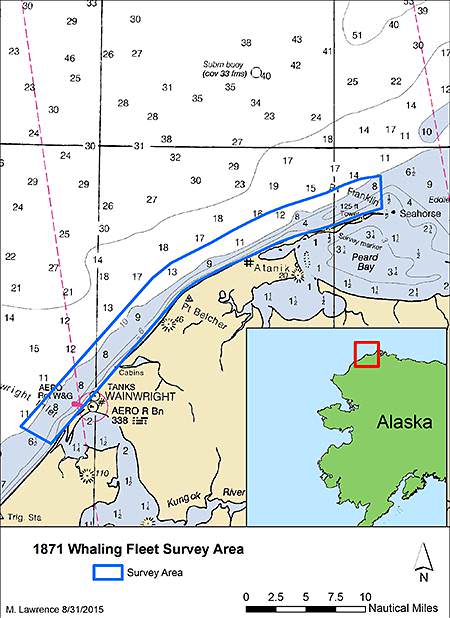
This map shows the area that was surveyed during the search for the Lost Whaling Fleets 2015 expedition.
Credit: M. Lawrence/NOAA
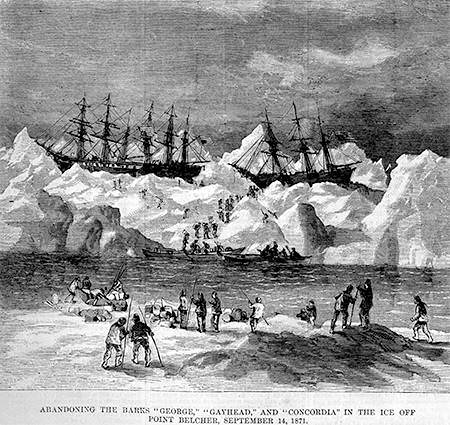
Abandonment of the whalers in the Arctic Ocean, September 1871, including the George, Gayhead, and Concordia. Scanned from the original Harper's Weekly 1871.
Courtesy of Robert Schwemmer Maritime Library
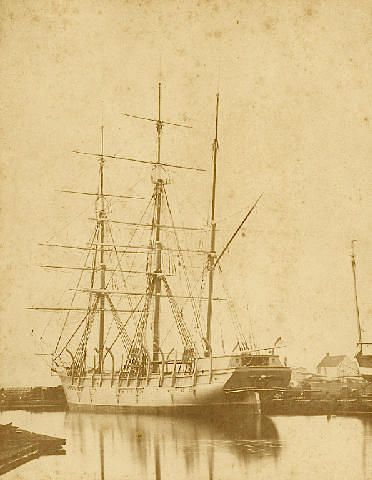
The Concordia, one of the ships trapped by pack ice close to the Alaskan Arctic shore in 1871, hailed from New Bedford, MA.
Credit: New Bedford Whaling Museum
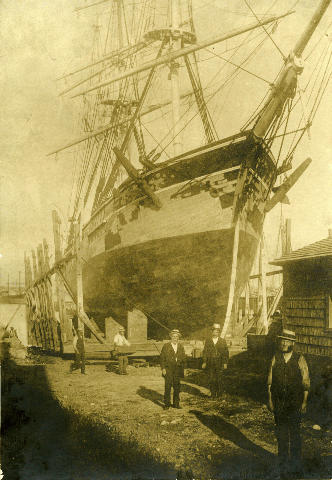
The Gay Head, one of the ships trapped by pack ice close to the Alaskan Arctic shore in 1871, hailed from New Bedford, MA.
Credit: New Bedford Whaling Museum
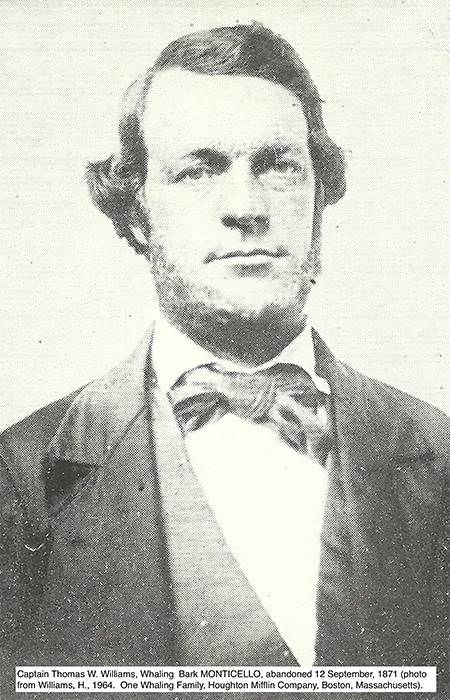
Captain Thomas W. Williams Whaling Bar Monticello, abandoned 12 September, 1871
Credit: Williams, H., 1964. One Whaling Family, Houghton Mifflin Company, Boston, MA
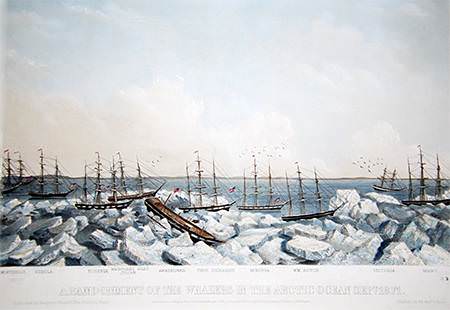
"Abandonment of the Whalers In The Arctic Ocean September 1871." Ships depicted: Monticello, Kohola, Eugenia, Julian, Awashonks Thom Dickason, Minerva, WM. Rotch, Victoria and Mary. Wainwright Inlet is in the background.
Credit: Ted and Ellie Congdon, Huntington Library
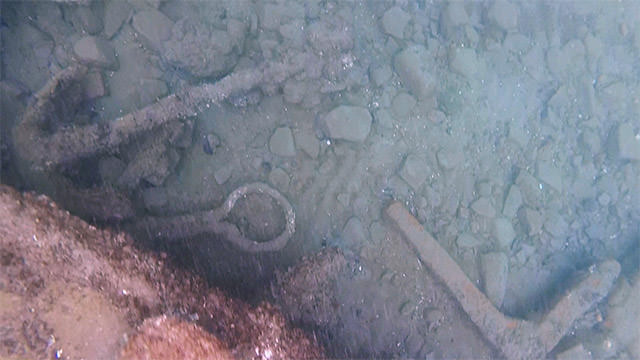
A small anchor; a chain plate, which held rigging used to tighten masts; and a iron knee, which was likely part of the ship's frame.
Credit: NOAA
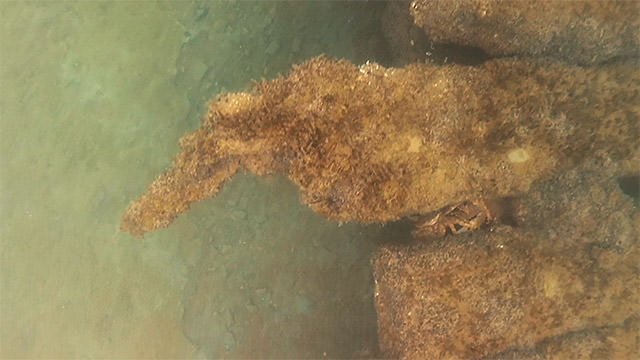
Crabs resting between the ship's ribs.
Credit: NOAA
Nearly 144 years after they sunk in the ice off the Arctic coast of Alaska, NOAA maritime archaeologists reported finding the battered hulls of two 1800s-era whaling ships and what appear to be parts of others. Video includes ballast stones, part of a ship's frame (ribs), some outer deck planking and crabs.
Credit: NOAA
Nearly 144 years after they sunk in the ice off the Arctic coast of Alaska, NOAA maritime archaeologists reported finding the battered hulls of two 1800s-era whaling ships and what appear to be parts of others. Video clip includes a chain plate, which held rigging used to tighten masts; bricks that would have been used to line a stove; a small anchor; some anchor chain; and what appears to be the top of bitt, used for tying off lines.
Credit: NOAA
Nearly 144 years after they sunk in the ice off the Arctic coast of Alaska, NOAA maritime archaeologists reported finding the battered hulls of two 1800s-era whaling ships and what appear to be parts of others. Video clip shows a ship's anchor.
Credit: NOAA
Nearly 144 years after they sunk in the ice off the Arctic coast of Alaska, government archaeologists reported finding the battered hulls of two 1800s-era whaling ships and what appear to be parts of others. Video clip includes ballast stones; planking; a sea star and mussels. Also visible are what appear to be a keel and some copper or bronze pins that would have held main structure timbers together.
Credit: NOAA

